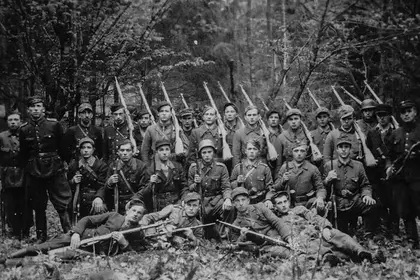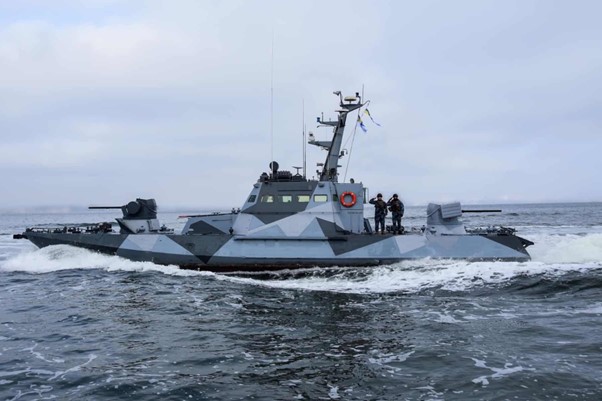The following is taken from an undated CIA document (presumably 1951).
The Ukrainian Insurgent Army (UPA) was created in 1942-1943 for the purpose of fighting the Nazis and for the protection of the Ukrainian population. It is the military force of the underground government of the Ukrainian Supreme Council of Liberation (UHVR). The UPA represents the only important resistance group operating at present in the Ukrainian SSR.
JOIN US ON TELEGRAM
Follow our coverage of the war on the @Kyivpost_official.
- The activities of the Ukrainian underground were and are conducted in practically all phases of life. Because of the topography and character of the western areas of Ukraine, these activities were and are more intense and systematic in Western Ukraine (the CARPATHIAN Mountains, VOLHYN - in general, west of the DNIEPER [Dnipro] River, than in other areas. In the beginning, these activities were conducted by all possible means and methods, from armed frontal attacks by the UPA, to disruptive penetration and infiltration of the Communist Party and the Red Army.
Among the victims of the UPA ambushes are some outstanding Soviet leaders:
- 1944 - the UPA ambushed and mortally wounded Soviet Marshal VATUTIN.
- March 1947 - UPA. men attacked and killed Lt. General Karol SWIERCZEWSKI, Vice Minister of Defense of Poland (the "General. Walter" of the Spanish Civil War)
- 1948 - The UPA killed Lt. General MOSKOLENKO, a high-ranking [Soviet Interior Ministry] MVD officer. The representatives of the UHVR claim that 35,000 officers and non-commissioned officers of the MVD and MGB [USSR Ministry of State Security] have fallen at the hands of the UPA during the period 1945 to January 1951.
- 1945, 46, 47, 48 - In the STANISLAV [Ivano-Frankivsk] Oblast, partisan groups existed in large numbers. (Airing 1945, 46, 47, and 48, many Ukrainians were arrested by the MVD. A state farm in STANISLAV region was attacked by a number of partisan troops in the Summer of 1947. All the buildings were burned, as well as all supplies that could not be carried away. Other attacks are mentioned in the report.
- 1945 -47 - Partisan activity in the CARPATHIAN region. Source mentions attacks on Soviet Communist Party officials at State Farms in the STRYJ area and the CZERNOWITZ oblast, and states that the movement was strongest in areas of LVOV [Lviv] , STANISLAV, DROHOBYCH, PRZEMYSL, and TERNOPOL.
- 1946-47 - frequent attacks by partisans upon State property were carried out in STANISLAV Oblast, Western Ukraine
- 1947-48 - an UPA unit composed of three companies battles with Soviet forces for control of LEMKIVTSI area [in present day eastern Poland]. Also UPA. skirmishes with Soviet forces in various localities in the Western oblasts.
- 1948 November - an MVD dragnet in NIKOLAYEV (4658N-3200E) [Mykolaiv]; uncovered a partisan headquarters. With the exception of a few anti-Soviet leaflets and a printing press, the entire headquarters was evacuated in time.
- 1948- small but numerous anti-Communist partisan bands have been operating along the Polish-USSR border, approximately 30 miles west of LVOV. These bands actively engaged in armed encounters with Soviet Security Forces.
- 1949 - on 30 Dec. 1949, the MOB Minister of State Security of the Ukrainian SSR, It. Gen. M. KOVALCHUK issued a proclamation to all resistance members to return peacefully to their normal occupation under the promise of a general amnesty:
ORDER OF THE MINISTER OF STATE SECURITY OF THE UKRAINIAN SSER
Regarding the Release from Criminal Responsibility of all Members of the Remnants of the Defeated Ukrainian Nationalist Bands in the Western Oblasts of the Ukraine SSR who voluntarily appear before the Organs of the Soviet Government for the Purpose of Unconditional Surrender. No. 312, 30 Dec. 1949, City of Kiev [Kyiv]
In the Spring of 1950, when it was seen that this appeal had failed to make any impression, strong large-scale repressive measures were undertaken throughout Ukraine. In some areas, detachments of 1,000 to 5,000 MGB troops were ssed in individual operations to clean up the district. In one district, this sweep lasted about ten days. In others, they were repeated several times within a period of weeks.
You can also highlight the text and press Ctrl + Enter



